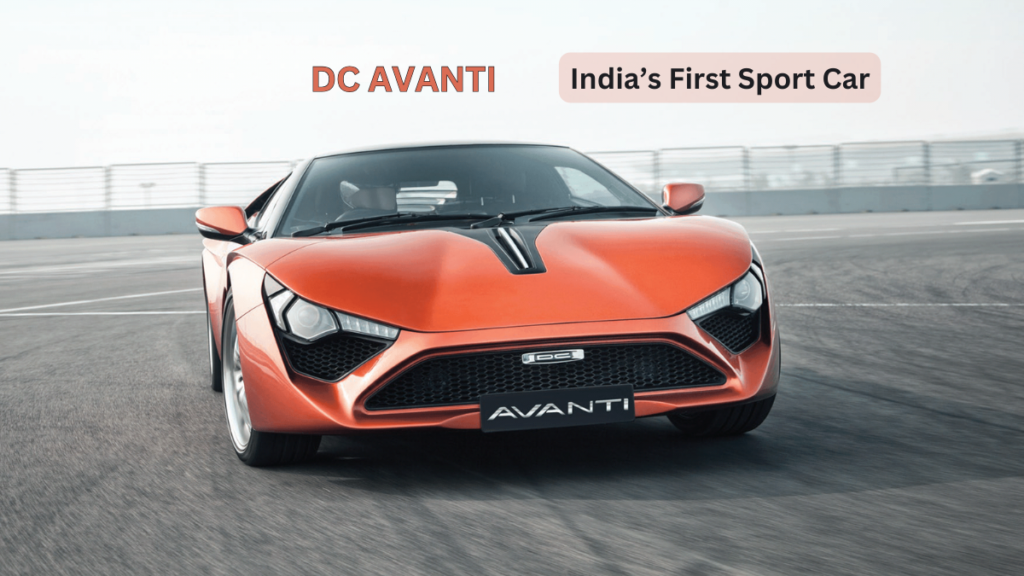Lowrider Bike
Ever seen a bike cruising low and slow, decked out in flashy paint, chrome, and with a swagger all its own? That’s the magic of a lowrider bike. These bikes aren’t just modes of transport; they’re rolling art pieces and cultural icons. From their humble beginnings to their status today, lowrider bikes have carved out a unique niche in the world of cycling and beyond.
Table of Contents
ToggleThe Birth of the Lowrider Bike
Influence from Lowrider Cars
Lowrider bikes owe much of their existence to the lowrider car movement that began in the 1940s and 50s. Originating in the Mexican-American communities of Southern California, lowrider cars were all about style and cruising low. The idea quickly transferred to bicycles, especially as younger enthusiasts wanted to mimic the low-slung aesthetic of these cars.
Evolution in the 1960s and 70s
As the lowrider car culture blossomed, so did the lowrider bikes. The 1960s and 70s saw a surge in popularity, particularly among youth who couldn’t afford a car but wanted to be part of the lowrider scene. These bikes started as modified Schwinn Stingrays, with their banana seats and ape hanger handlebars, making them the perfect canvas for customization.
Key Figures and Milestones in Lowrider Bike History
Names like Jesse Valadez, who created the iconic “Gypsy Rose” lowrider car, also resonate in the bike community. The founding of magazines like Lowrider Magazine in the late 70s helped to cement the lowrider bike as a staple in the culture, providing enthusiasts with a platform to showcase their creations and exchange ideas.
Design and Customization
Lowrider bikes are all about personalization and flair. No two are the same, and that’s the beauty of it. Here’s how they come together:
Basic Structure and Features of a Lowrider Bike
At their core, lowrider bikes start with a standard bike frame. The magic happens in how these frames are transformed. Typically, they are elongated and lowered, giving them their distinctive profile. Add in extended forks, custom wheels, and unique handlebar designs, and you’ve got the makings of a lowrider.
Common Customization Techniques
Paint and Graphics
The paint job is where creativity truly shines. From candy paint to metallic finishes, lowrider bikes often sport vibrant, eye-catching colors. Detailed airbrushing and pinstriping add layers of artistry, making each bike a canvas of its own.
Chrome and Accessories
Chrome is king in the lowrider world. Every bit of the bike, from the handlebars to the fenders, can be decked out in shiny chrome. Accessories like custom mirrors, lights, and even sound systems elevate the bike’s style quotient.
Unique Frames and Structures
Some enthusiasts go a step further by creating completely custom frames. These can range from mildly modified to radically different from any standard bike design. Think twisted metal frames, extreme bends, and intricate detailing that make each ride a standout.
Popular Styles and Trends in Customization
Trends in lowrider bikes are ever-evolving. While traditional designs still hold sway, modern twists are becoming popular. Themes from pop culture, vintage aesthetics, and even futuristic looks are all fair game in the world of lowrider customization.
Building a Lowrider Bike
Dreaming of crafting your own lowrider bike? Here’s a step-by-step guide to getting started:
Finding the Right Frame and Parts
Your journey begins with choosing a frame. Vintage Schwinns are popular choices, but any sturdy frame can be a good start. Look for parts at local bike shops, online marketplaces, or even bike swaps.
Essential Tools and Equipment
You’ll need basic bike tools—wrenches, screwdrivers, and pliers—along with some specialty tools for customization. A good workbench and a bike stand will make your project easier and more enjoyable.
Step-by-Step Guide to Building Your Own
Assembling the Frame
Start by modifying the frame to achieve the desired lowrider look. This might involve cutting, welding, or bending parts of the frame. Ensure all modifications are sturdy and safe.
Adding the Wheels and Tires
Next, choose your wheels. Many lowriders go for 20-inch wheels with whitewall tires for that classic look. Install the wheels and ensure they spin true and free of wobbles.
Finishing Touches: Paint, Chrome, and Accessories
Once the frame and wheels are in place, it’s time to add your personal touch. Paint the frame, add chrome parts, and install any accessories you’ve chosen. This is where your bike’s personality truly comes to life.
Lowrider Bike Clubs and Communities
Lowrider bikes aren’t just about the ride; they’re about community.
Prominent Lowrider Bike Clubs
Clubs like Los Cycos and Boulevard Bombs have chapters across the U.S. and beyond, offering a sense of camaraderie and belonging. These clubs often participate in local events and charity rides, bringing together enthusiasts from all walks of life.
Community Events and Gatherings
Lowrider bike shows and cruises are where the community shines. Events like the Lowrider Super Show feature hundreds of custom bikes, and are the perfect place to see the latest trends and meet other enthusiasts.
The Role of Social Media and Online Communities
Platforms like Instagram and Facebook have expanded the reach of the lowrider community. Online groups and forums provide a space for sharing projects, tips, and organizing virtual or in-person meetups.
Lowrider Bikes in Popular Culture
Lowrider bikes have left their mark on popular culture in numerous ways.
Appearances in Movies and Music Videos
From films like Mi Vida Loca to music videos by artists like Snoop Dogg, lowrider bikes have made their presence felt. They symbolize a laid-back lifestyle and an eye for detail, often associated with West Coast culture.
Lowrider Bikes in Art and Fashion
The artistry of lowrider bikes has inspired numerous works in both traditional and street art. Fashion brands also draw from the bold and colorful aesthetic of lowrider culture, incorporating these elements into their designs.
Influence on Youth Culture and Identity
For many young people, especially in Latino communities, lowrider bikes are more than just a hobby—they’re a form of expression and identity. Building and riding these bikes offers a creative outlet and a connection to cultural heritage.
The Mechanics Behind Lowrider Bikes
Understanding the Low and Slow Ride
The hallmark of a lowrider bike is its smooth, slow ride. This is achieved through careful tuning and modifications, including stretched frames and lowered seats that bring the rider closer to the ground.
Technical Innovations and Modifications
Lowrider bikes often feature unique mechanical tweaks, such as springer forks and custom gearing, that enhance their distinct riding experience. Innovations in these bikes continue to evolve, blending tradition with new technology.
Balancing Aesthetics and Performance
While looks are paramount, a good lowrider bike also rides well. Builders strive to balance aesthetics with functionality, ensuring that their creations are not only beautiful but also roadworthy.
Safety and Regulations
Riding a lowrider bike comes with its own set of considerations.
Riding Safely in Urban Environments
Lowrider bikes, with their low profile and extended parts, require extra attention to safety. Riders should be aware of their surroundings and practice defensive riding techniques, especially in busy city streets.
Legal Considerations and Restrictions
Different areas have varying laws regarding bike modifications. It’s essential to check local regulations to ensure your lowrider bike is street legal, particularly concerning aspects like lighting and reflectors.
Protective Gear and Maintenance Tips
Always wear a helmet and consider other protective gear like gloves and knee pads. Regular maintenance is crucial—keep your bike clean, check for any loose parts, and ensure the brakes and gears are functioning correctly.
Economic Impact and Market Trends
Lowrider bikes have grown from a niche hobby into a significant market.
The Business of Lowrider Bikes
From custom bike builders to specialized parts manufacturers, the lowrider bike industry supports a wide range of businesses. These businesses cater to enthusiasts looking to build or buy their dream ride.
Trends in Sales and Collecting
Lowrider bikes have become collectible items, with vintage models and rare parts fetching high prices. The market is driven by both new enthusiasts and seasoned collectors looking to expand their collections.
Future Outlook for the Lowrider Bike Market
The future looks bright for lowrider bikes, with growing interest in customization and unique personal expression. As more people discover the joy of building and riding these bikes, the market is likely to expand even further.
Conclusion
Lowrider bikes are more than just a way to get around—they’re a statement, a piece of art, and a cultural touchstone. They blend history, community, and creativity in a way few other hobbies do. Whether you’re looking to build your own or just admire from afar, there’s no denying the unique charm and enduring appeal of lowrider bikes.
FAQs on Lowrider Bikes and Motorcycles
What are lowrider motorcycles called?
Lowrider motorcycles are often referred to simply as “lowriders” or sometimes “lowrider bikes” in the motorcycle community. They are characterized by their low seat height and elongated frames, much like their bicycle counterparts. Harley-Davidson’s Low Rider and Softail models are classic examples of lowrider motorcycles.
What makes a bike a lowrider?
A bike becomes a lowrider through several key modifications:
- Low-Slung Frame: The frame is either built or modified to sit closer to the ground, often giving the bike a distinctive, lowered stance.
- Custom Paint and Chrome: Bright, eye-catching paint jobs and extensive use of chrome are hallmarks.
- Unique Accessories: Items like extended forks, ape hanger handlebars, and intricate detailing set lowriders apart from standard bikes.
- Comfort and Style Over Speed: Unlike racing bikes, lowriders prioritize style and comfort, embodying a “low and slow” ethos.
Where did the lowrider bike come from?
Lowrider bikes originated in the Mexican-American communities of Southern California in the late 1960s and early 1970s. Inspired by the lowrider car culture, young enthusiasts began customizing their bicycles to mimic the look and feel of the lowrider cars, making them accessible to those who couldn’t afford a car.
Who is the godfather of lowrider bikes?
The title of “godfather of lowrider bikes” is often attributed to Jesse Valadez, a prominent figure in the lowrider community. Valadez was also known for his famous lowrider car, the “Gypsy Rose,” and his influence extended into the lowrider bicycle culture, inspiring many with his designs and dedication to the movement.
Who is the most famous lowrider?
While “most famous lowrider” can refer to both bikes and cars, in the context of lowrider cars, the “Gypsy Rose” is often considered the most iconic. This 1964 Chevy Impala is renowned for its intricate floral paint job and has become a symbol of the lowrider movement. For bikes, no single lowrider bike has reached the same iconic status, but clubs and individual builders have created many celebrated designs.
Who is the king of all bikes?
In the lowrider bike world, the title of “king of all bikes” is subjective and often bestowed upon the most elaborate and artistically customized bike. However, in the broader motorcycle world, the Harley-Davidson Low Rider is often regarded as a classic king due to its influence and popularity in the lowrider community.
When were lowriders banned?
Lowrider cars faced bans and restrictions in various places throughout the 1970s and 1980s due to safety concerns and perceptions of association with gangs. These bans often included prohibitions on certain modifications, like hydraulic suspensions, which were seen as dangerous. However, lowrider bicycles have not typically faced the same level of regulation.
What race started lowriders?
The lowrider movement was pioneered by Mexican-Americans in the Southwestern United States, particularly in California. This community developed and popularized the distinctive style of lowrider cars and bikes as a form of cultural expression and community identity.
Who made the first lowrider?
The first lowrider cars were created by Mexican-American enthusiasts in the 1940s and 1950s. As for lowrider bikes, they emerged in the late 1960s and early 1970s, with the first lowrider bicycles being crafted by young individuals in the Mexican-American communities of Southern California.
Is lowrider cruising illegal?
Cruising in lowrider cars has faced legal challenges in some cities, where laws have been enacted to limit cruising due to concerns about traffic congestion and public safety. However, cruising in lowrider bicycles generally doesn’t face the same legal restrictions, though riders should always adhere to local traffic laws.
Is the Harley low rider a girls bike?
The Harley-Davidson Low Rider is not specifically a “girls’ bike.” It’s designed to appeal to a broad range of riders, both male and female, due to its lower seat height, making it accessible and comfortable for shorter riders. It’s a versatile model appreciated by many in the motorcycle community for its classic style and ease of handling.
Why do lowriders bounce?
Lowrider cars bounce due to hydraulic suspension systems, which allow the vehicle to be raised and lowered at the push of a button. This feature is used for show and to impress at events. For lowrider bicycles, the term “bounce” is more figurative, referring to the smooth and stylish cruising rather than literal bouncing.
What is the most common lowrider?
The most common lowrider bikes are those based on vintage Schwinn Stingray models, especially from the 1960s and 70s. These bikes provide an excellent foundation for customization due to their classic design and durable frames. In the realm of lowrider motorcycles, Harley-Davidson models, particularly the Low Rider and Softail, are the most iconic.
How much horsepower does a lowrider have?
Lowrider bicycles don’t have horsepower since they are pedal-powered. However, for lowrider motorcycles, the horsepower varies depending on the engine. For example, the Harley-Davidson Low Rider S can produce around 93 horsepower, providing ample power for both cruising and performance.
Why is it called a low rider?
The term “low rider” comes from the bike’s or car’s modified design that sits low to the ground. This low stance is achieved through custom suspensions and frames, emphasizing a sleek, streamlined look that defines the “low and slow” cruising style.
What defines a lowrider bike?
A lowrider bike is characterized by its low-slung frame, custom paint, chrome detailing, and often a focus on unique styling over speed or performance.
How do I start building my own lowrider bike?
Begin by selecting a sturdy frame, gather the necessary tools, and decide on your design and customizations. Joining online forums and local clubs can provide valuable tips and support.
Are there any specific laws about riding lowrider bikes?
Laws vary by location, but generally, you must adhere to local regulations regarding bike modifications, safety equipment, and riding practices.
How can I join a lowrider bike club?
Look for local clubs in your area or join online communities to connect with other enthusiasts. Attend local events and shows to meet members and learn more about the community.
What are the most popular lowrider bike models?
Vintage Schwinn Stingrays and custom-built frames are among the most popular choices for lowrider bikes, but the best model depends on your personal style and customization preferences.



















4 thoughts on “Lowrider Bike (2024) | A Complete Detail and Guide”